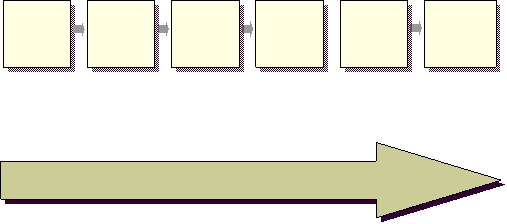

April 05
Prof. Ismael H. F. Santos
- ismael@tecgraf.puc-rio.br
2

SOA: evolution to a more
flexible TI architecture

Arquiteturas
Monolíticas
antes 1950
até 1960
1970 - 1980
1990 para início
de 2000
hoje
final 1990
Aumentando Modularização para alcançar Flexibilidade
Subrotinas
/
Remote
Procedure
Calls
Invocação de
Objectos
remotos
Processamento
de
mensagem
EAI
Serviços
(SOA)

1980 - 1990
CICS Object
Technologies CORBA MQSeries J2EE WebServices